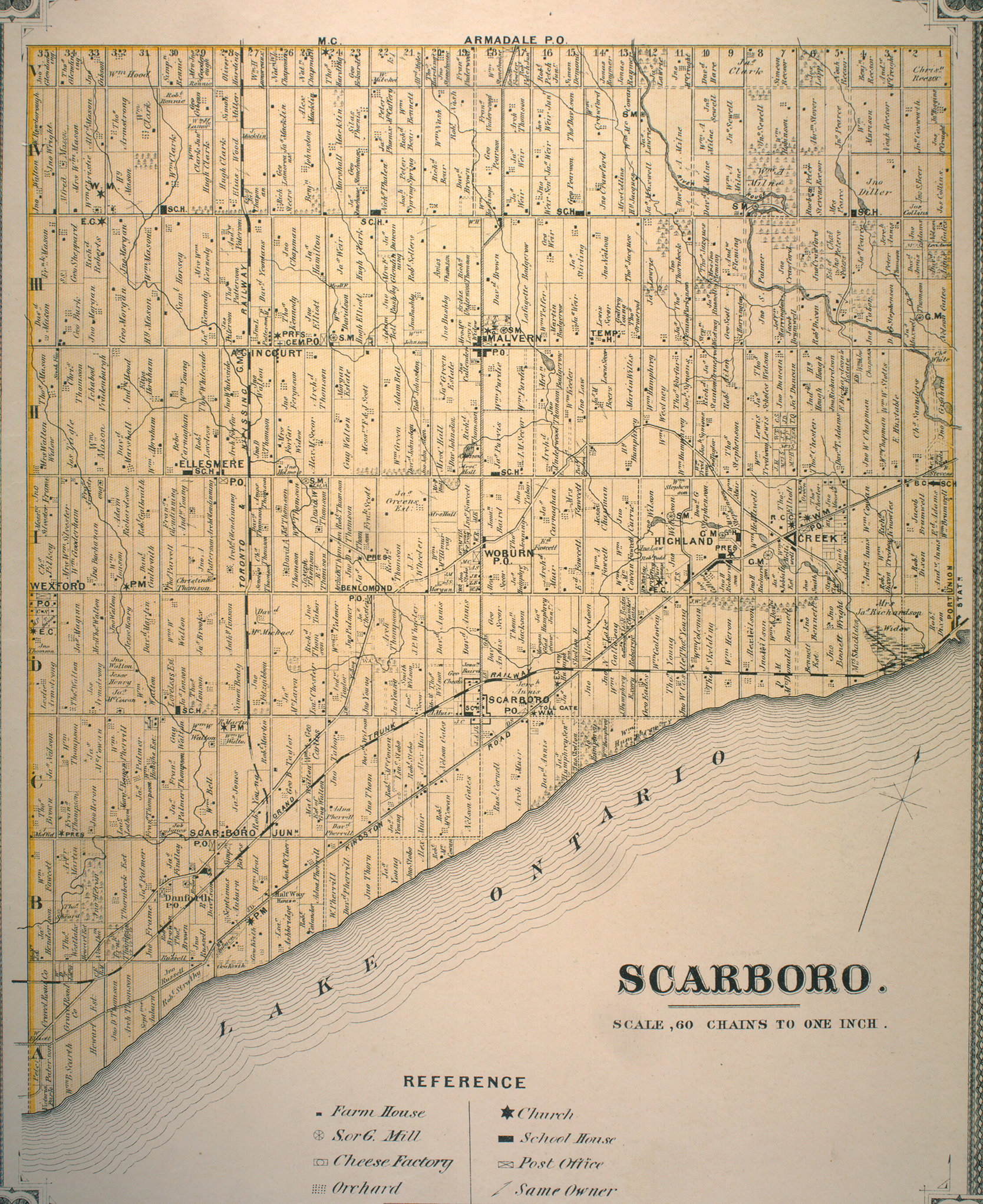
A project to digitally map ownership of land at the University of Toronto Scarborough and the surrounding area has been awarded an Undergraduate Fellowship from the University’s Critical Digital Humanities Institute.
Quieting & Reclamation (QnR) is a collaborative research project led by Sociology Professors Patricia Landolt and Joe Hermer that brings to light the conflictual relationship between settler landholding and Indigenous sovereignty. The project will use Story Mapping to build a digital public history of the UTSC campus utilising contemporary and historical materials from public and private archives.
Five undergraduate students have joined the QnR project as CDHI research fellows and are gaining first-hand research experience while also engaging critically in a research centered dialogue about setter-colonialism and treaty obligations as guests and arrivants on Indigenous territories.
The student researchers are designing a digital map of the University of Toronto Scarborough campus that will show the relationship between settler land theft and Indigenous dispossession and the erosion of sovereignty. Students have examined crown patents given to the first settler landholders, the land registry showing the purchase and sale of land over time, and archival evidence of how settlers speculated and accumulated wealth through land theft.
Professor Patricia Landolt said: “Students have been finding and using property titles and archival materials such as letters and wills that allow us to trace settler presence. In doing so, we’re making the case that settler history is also the settler-colonial present, and raising questions about the violation of treaties and erasure of Indigenous sovereignty.”
The project has given the students a lot of practical research experience, explains Prof. Landolt, but it also has opened their eyes to the ways in which settlers repeatedly circumvented the legal agreements the Crown and its local representatives made with Indigenous nations. “It’s a very material experience, when you compare a Crown patent and you look at the language of what is granted to the first settlers and you compare it to everything that is denied and taken away from Indigenous peoples in the original Williams Treaties – the right to forage, the right to trap and fish,” she says.
Caeley Genereux, who recently graduated from UTSC with an Honours Bachelor of Science specializing in Mental Health and minoring in Sociology, worked on the project for three years said she made many exciting discoveries over the course of the research. They were struck by the methods with which settlers silenced the presence of Indigenous people on the land, including the use of stories, legends, and memorabilia such as plaques or historical buildings on unceded land. “As an Anishinaabekwe it was both validating and upsetting to see the records of Indigenous presence, as well as the pure erasure of the Indigenous peoples of the Dish With One Spoon Wampum, Toronto Purchase, and Williams Treaties,” they say.
Student Farzana Rahman, who is double majoring in International Development and Environmental Studies, has recently joined the QnR team as a CDHI Fellow. “The training I have received has been transformative,” she said. “I knew that entering this research space as a settler-immigrant required great humility but realizing and amending the scale of my ignorance towards treaty consciousness has been a deeply valuable education. Moving forward, as part of the mapping team, I hope to create visually accessible tools that demonstrate the history of dispossession that marks the landscapes which this university occupies. As such, working with historical maps, and learning about the importance of treaty education from Indigenous approaches and philosophies has been an important source of knowledge as well.”